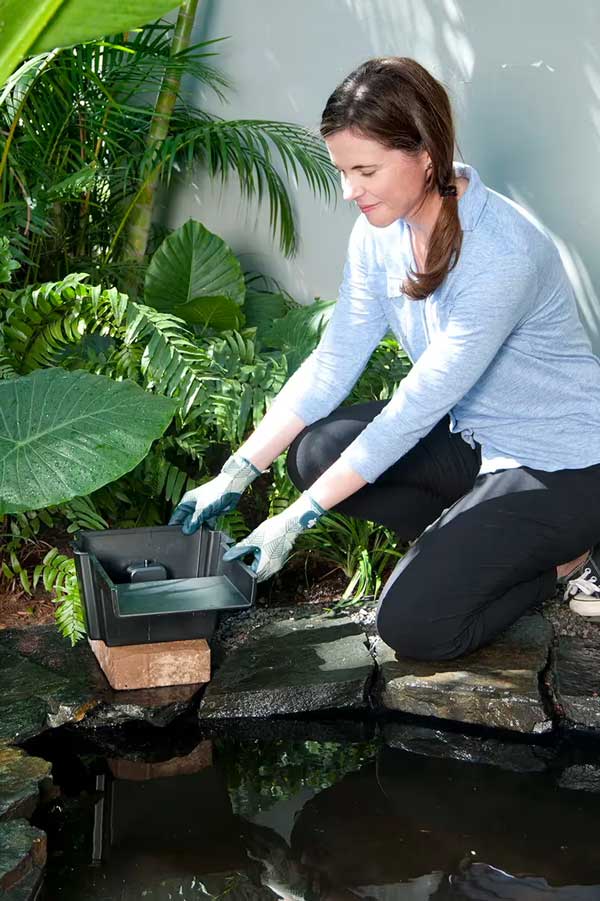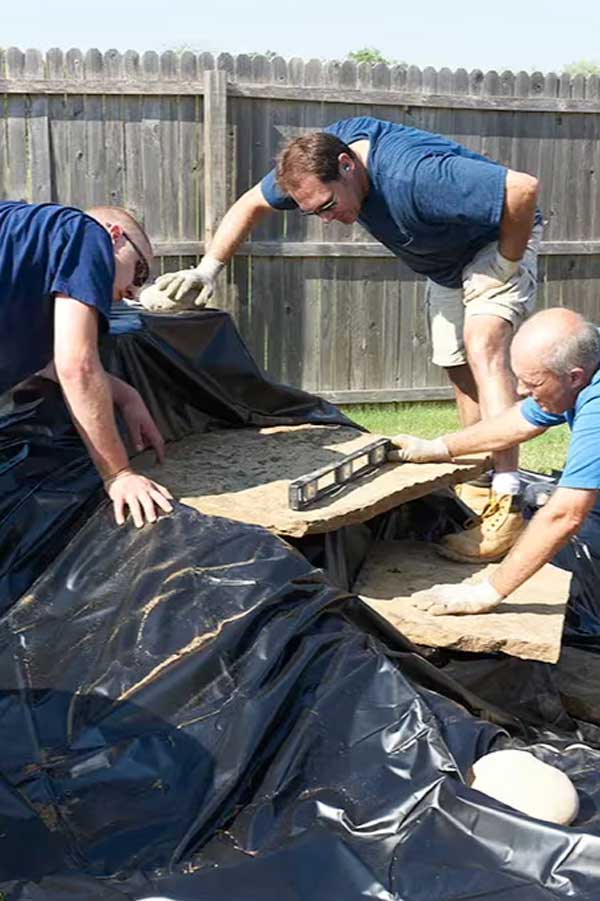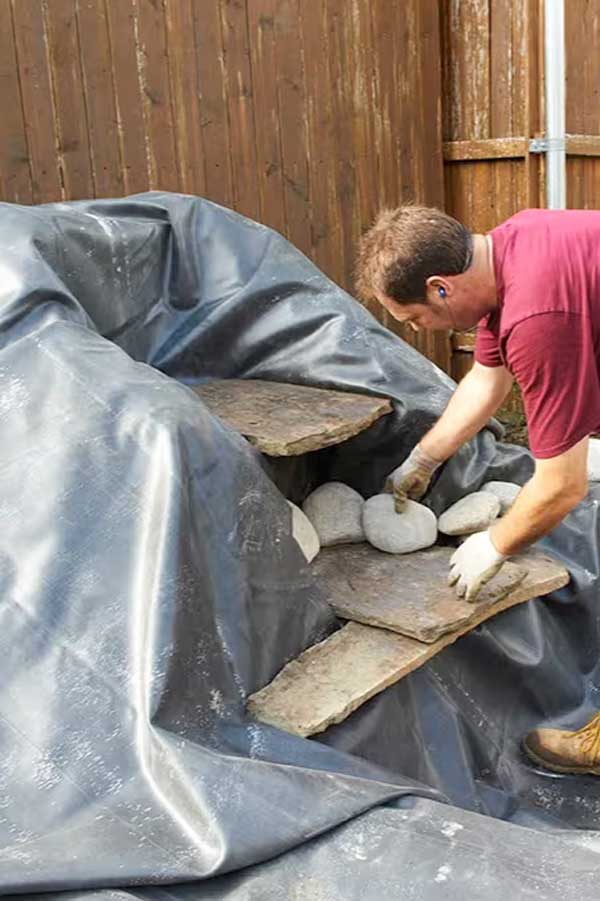Building your Waterfall
Adding a waterfall to an existing pond or building a water feature with a waterfall can be easy. With a few calculations, a fair-weather weekend, and the right equipment you can have the waterfall of your dreams. There are a few things you should keep in mind...

Spillways
There are a couple ways to design the waterfall of your dreams.
Option 1
Use a TotalPond Waterfall Spillway and camouflage it with rocks and plants. It’s a foolproof way to design a small waterfall — all you need is the spillway, an appropriately sized pump and tubing. The spillway should sit on a flat surface at the edge of the pond/basin. The waterfall needs to be set up higher than the pond's surface so that the flowing water is visible. The higher the spillway is set up, the more water flow there will be.
Option 2
Construct your own waterfall spillway using flat stones and TotalPond Waterfall Foam Sealant, which guarantees a seamless waterfall. The expandable black insulating foam fills in gaps and ensures sufficient water flow over the rocks.

Pond Liner
Why might you need a liner?
As we mentioned in Before you Start, there are three different types of waterfall projects: adding to a pond, making a disappearing feature, or making a retaining wall. Not all of these projects require the use of a liner. Can you guess which?
Small waterfalls that utilize a preformed spillway don't require a liner, but if you construct your own spillway with landscaping stones or create a stream, a liner should be used to keep the water from seeping into the ground. Our medium ]and large waterfall projects with a pond both use a liner because of how they are built.
Waterfalls built into retaining walls and disappearing features use liners to hold the water in a reservoir

Why choose TotalPond liner?
See Pond Basics for more information.
Tips for Choosing the Right Liner
- Liners come in several sizes so you should purchase a liner that is slightly larger than the hole or path as you can cut it down if necessary. You can also seam together multiple liners to form an even larger liner with seaming tape.
- Keep in mind, we recommend having at least 1 ft. of liner overlap on each side of the area, disguised and held in place by decorative rock or landscaping. This prevents the liner from slipping due to the weight of the water it’s holding.
- Clear away any debris from the hole that could potentially puncture the liner. We recommend an underlayment for added protection. Sand or old blankets can protect the liner. Press the liner into all gaps to ensure a proper fit.
What size liner do you need?
Use this formula (measure in feet) to select the right liner. See Pond Basics for further sizing details.
Length + (Depth x 2) + (2 ft. overlap) = Liner Length
Width + (Depth x 2) + (2 ft. overlap) = Liner Width





